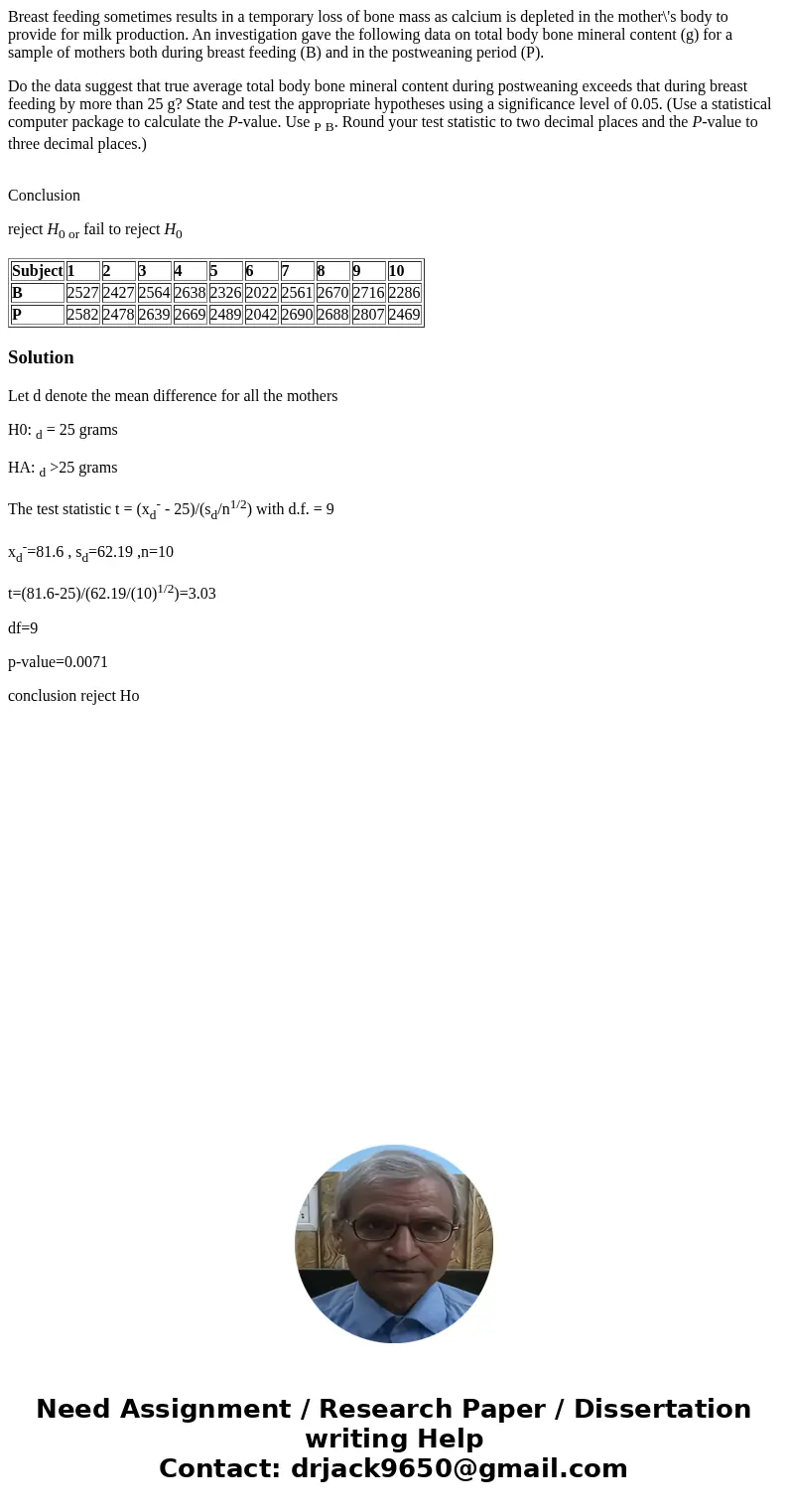Breast feeding sometimes results in a temporary loss of bone
Breast feeding sometimes results in a temporary loss of bone mass as calcium is depleted in the mother\'s body to provide for milk production. An investigation gave the following data on total body bone mineral content (g) for a sample of mothers both during breast feeding (B) and in the postweaning period (P).
Do the data suggest that true average total body bone mineral content during postweaning exceeds that during breast feeding by more than 25 g? State and test the appropriate hypotheses using a significance level of 0.05. (Use a statistical computer package to calculate the P-value. Use P B. Round your test statistic to two decimal places and the P-value to three decimal places.)
Conclusion
reject H0 or fail to reject H0
| Subject | 1 | 2 | 3 | 4 | 5 | 6 | 7 | 8 | 9 | 10 |
| B | 2527 | 2427 | 2564 | 2638 | 2326 | 2022 | 2561 | 2670 | 2716 | 2286 |
| P | 2582 | 2478 | 2639 | 2669 | 2489 | 2042 | 2690 | 2688 | 2807 | 2469 |
Solution
Let d denote the mean difference for all the mothers
H0: d = 25 grams
HA: d >25 grams
The test statistic t = (xd- - 25)/(sd/n1/2) with d.f. = 9
xd-=81.6 , sd=62.19 ,n=10
t=(81.6-25)/(62.19/(10)1/2)=3.03
df=9
p-value=0.0071
conclusion reject Ho

 Homework Sourse
Homework Sourse